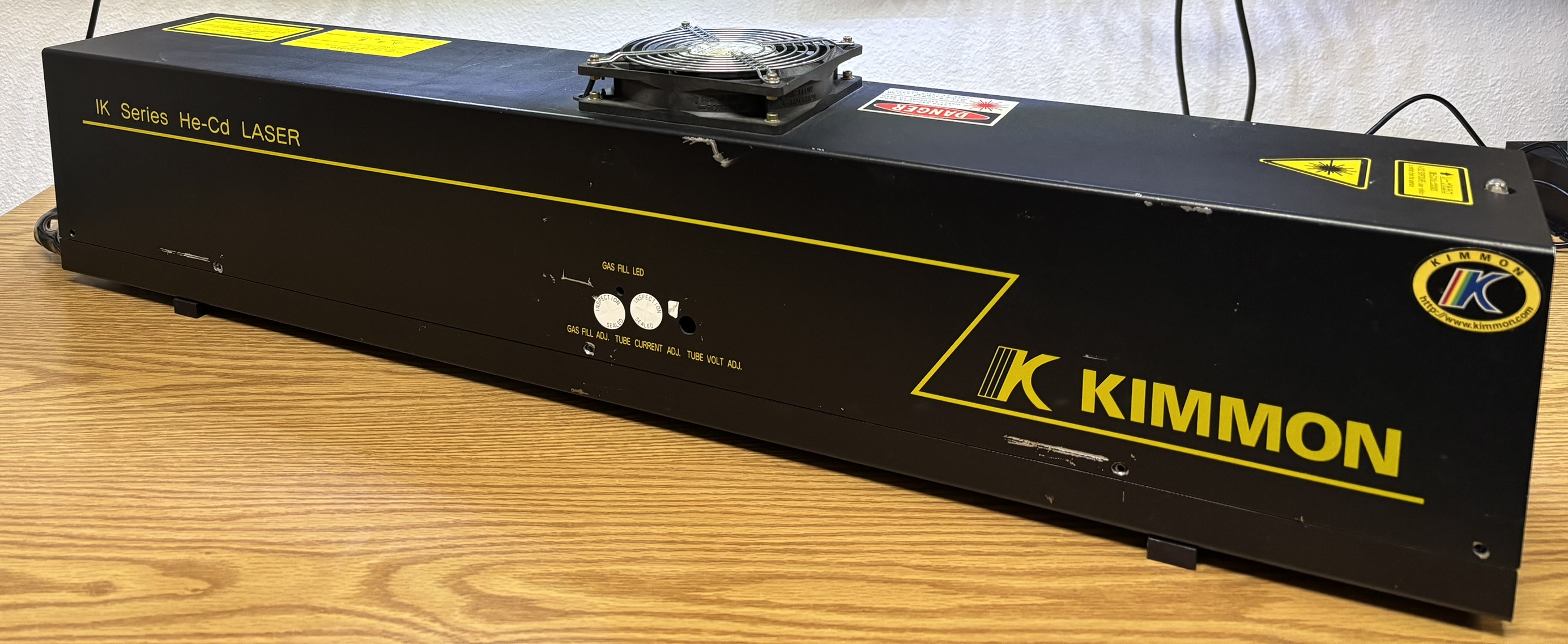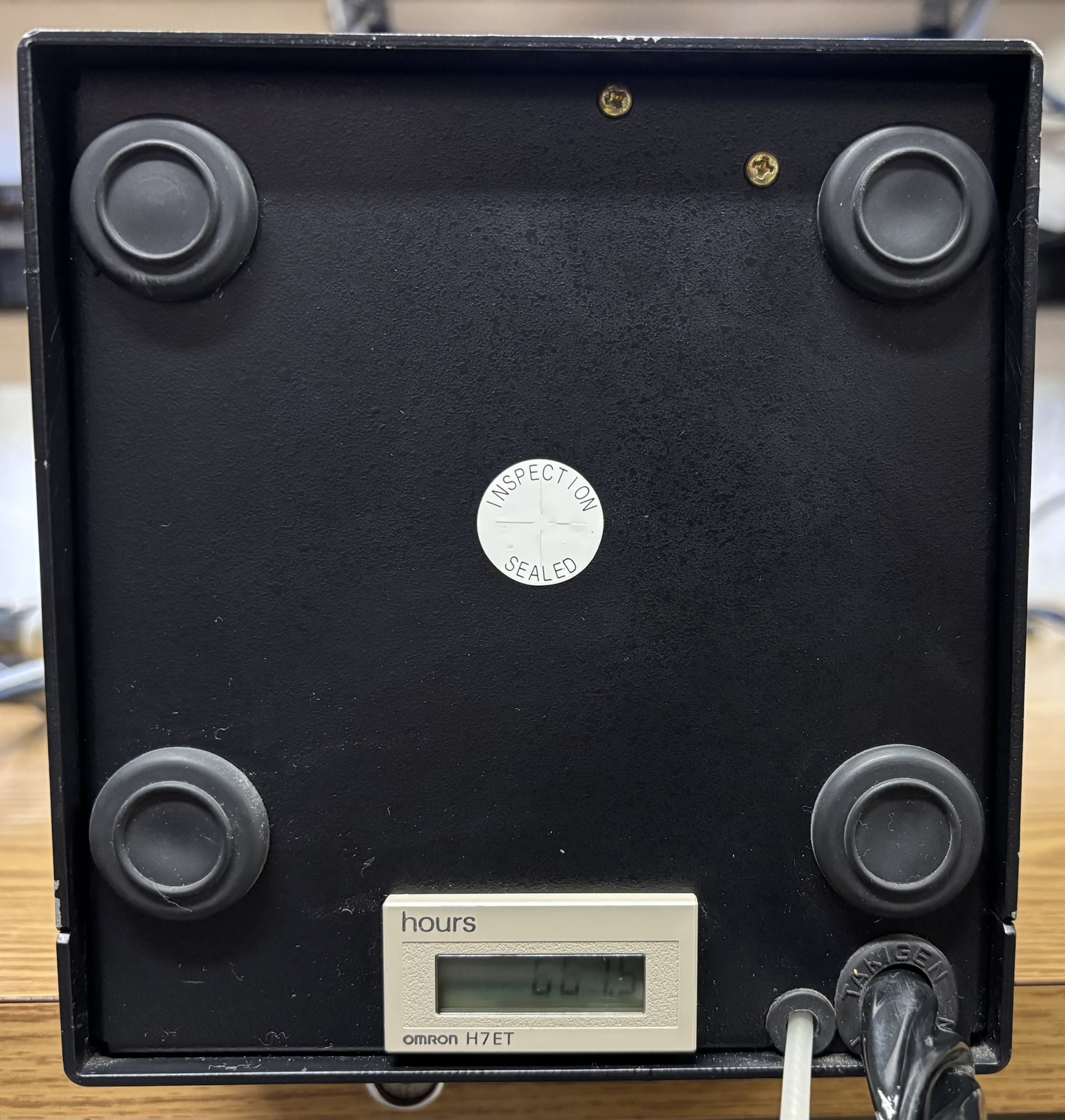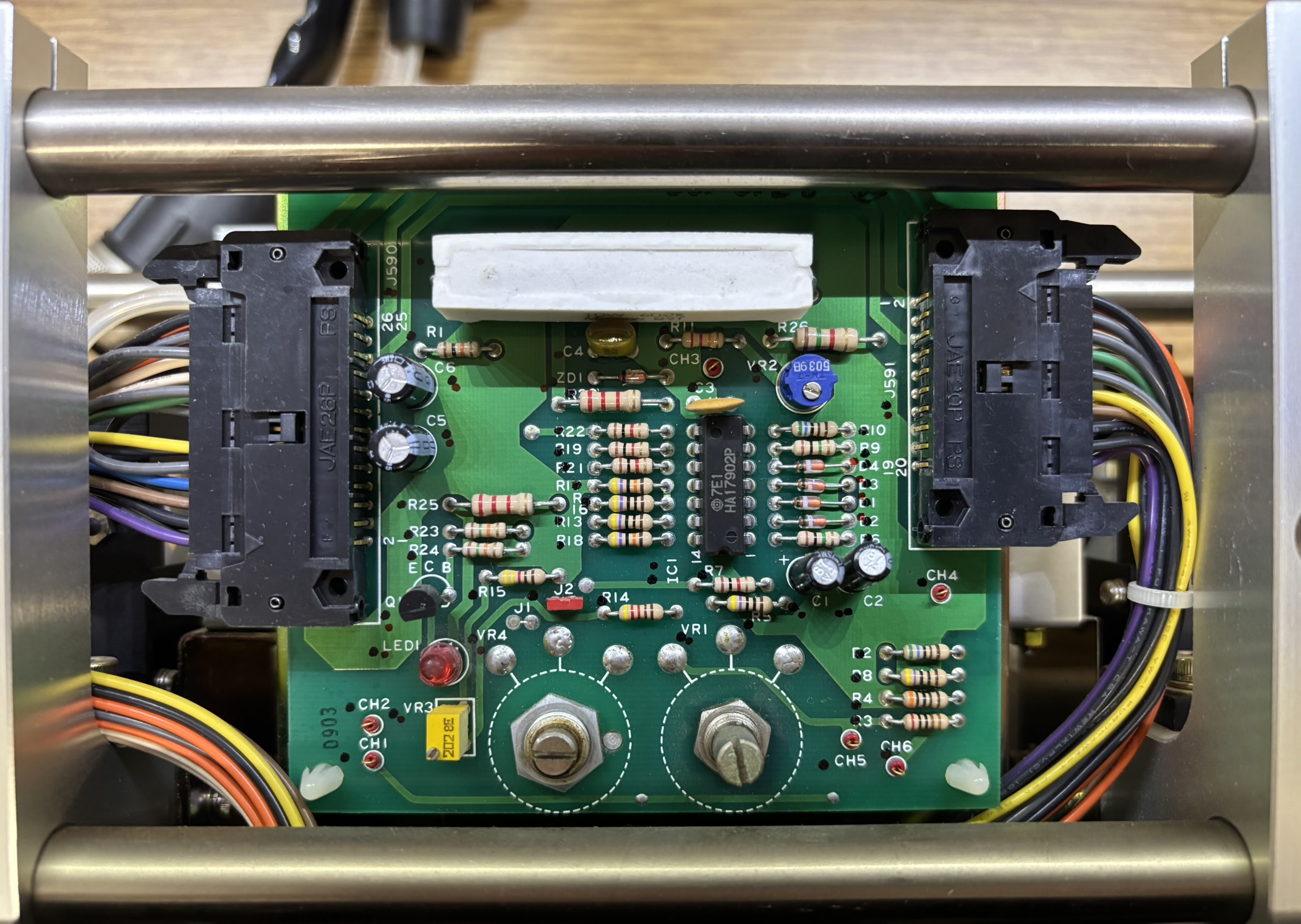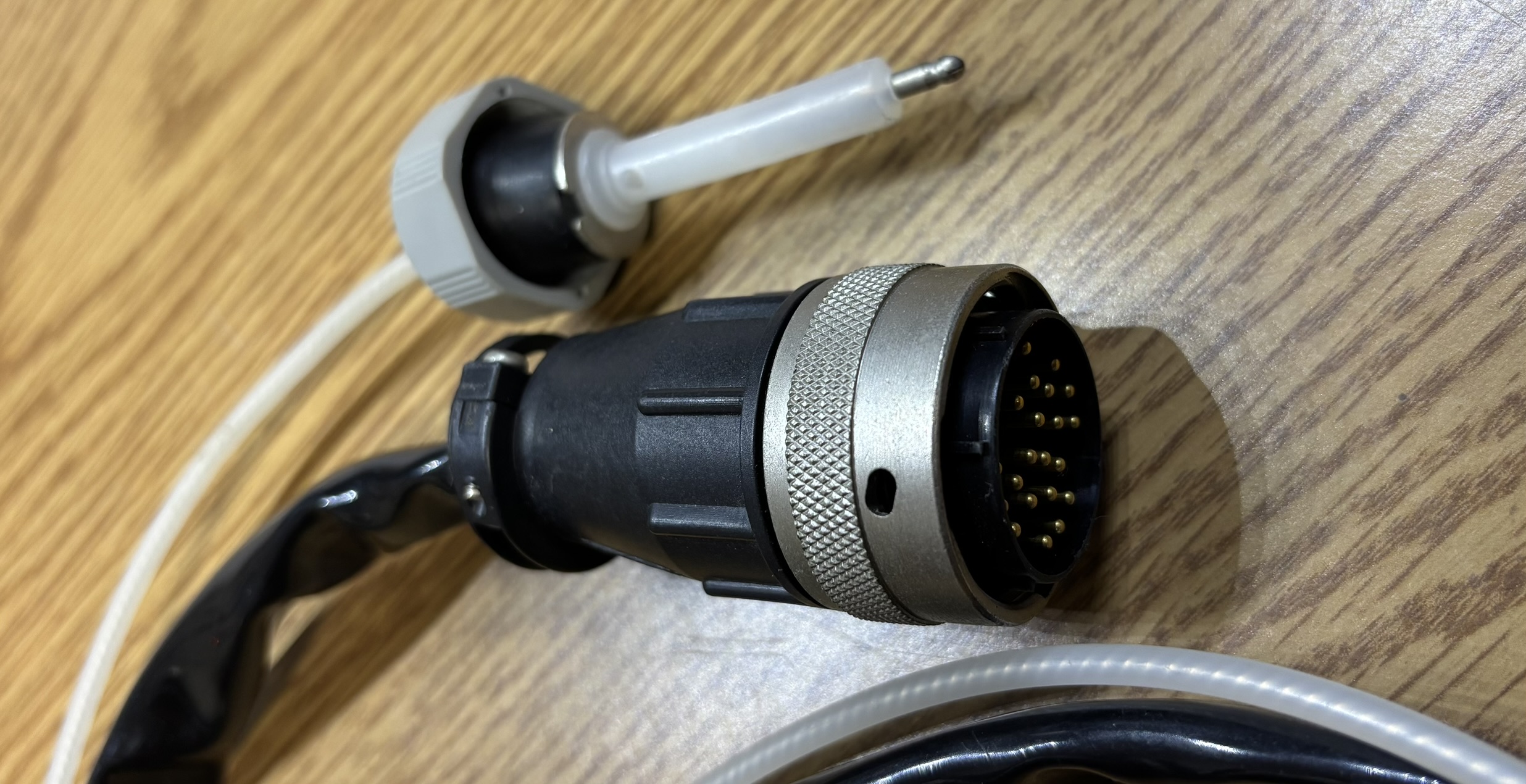The Kimmon IK3083R-D is a Helium Cadmium laser manufactured in 1999. It has a relatively weak maximum output power of 10mW, which is common with small to medium HeCd lasers. Despite the low output power, it features excellent beam characteristics (TEM00). It produces 325nm laser light, but unfortunately our unit will not be producing any as it met its demise a while ago when the end of the tube cracked. It was probably dropped or mishandled. Gas laser tubes are quite delicate and can be broken from drops and rough handling, despite the metal casing. It would be very costly to repair this unit, and is unlikely to be worthwhile given the alternative options, however it's a great display piece. The unit could be disassembled and scrapped for parts, but it's important to note that smashing up a HeCd laser tube must be done with extreme caution and ideally outdoors to avoid direct exposure to Cadmium, a toxic metal.

On the top of the case is a large 24V DC cooling fan and the usual laser warning labels, along with an emission indicator at the front.

The hour counter only indicates around 661 hours of runtime, which isn't too much. If the tube was not broken, this laser would have likely had many good operating hours left.

Removing the top cover reveals a very thin laser tube, wrapped in insulation along with a couple gas reservoirs, heaters, the filament, etc. The tube and glass components are securely held within a rigid mount consisting of two aluminum plates on either side connected by solid metal rods. This keeps all the optics in line and allows for precise adjustment if required. The rubber grommets on either side can be removed to expose the adjustment nuts located on both ends of all four metal rods.

This side view exposes some high voltage cabling and two magnets mounted on brackets near the center. These were likely added during production and while the laser was running to fine tune the beam profile.

On this side, more magnets are visible, which are glued in place in strategic spots around the tube. A circuit board with various connections to components within the tube is also visible.

This board has a few potentiometers accessible from outside the case through some holes. They are used to adjust tube voltage, tube current, and gas fill.

The umbilical is made up of two cables, the first being a high voltage cable with an Alden-style connector, and the second being a jacketed set of wires with a multipin twist-lock connector commonly seen on other gas lasers.

The datasheet for this laser is available at the link below.